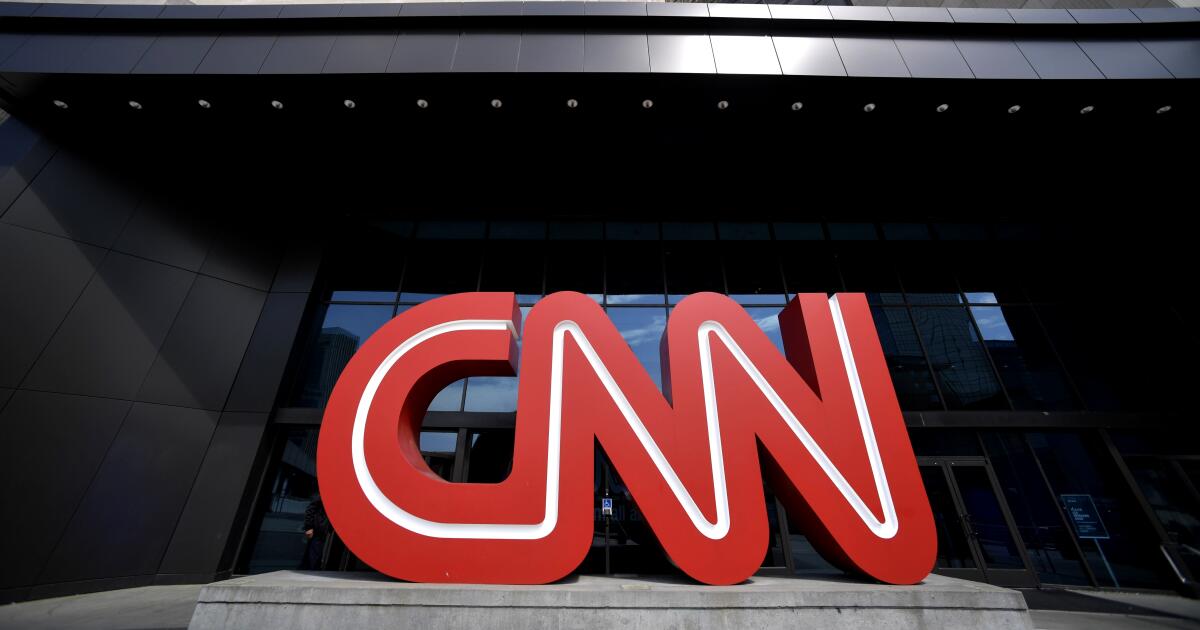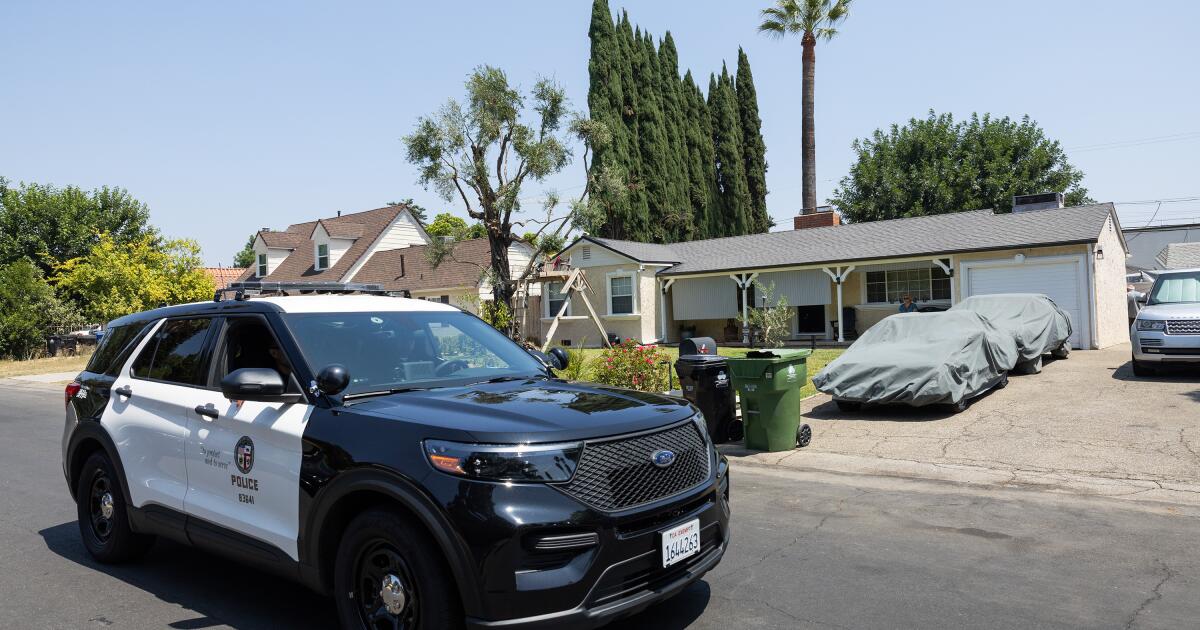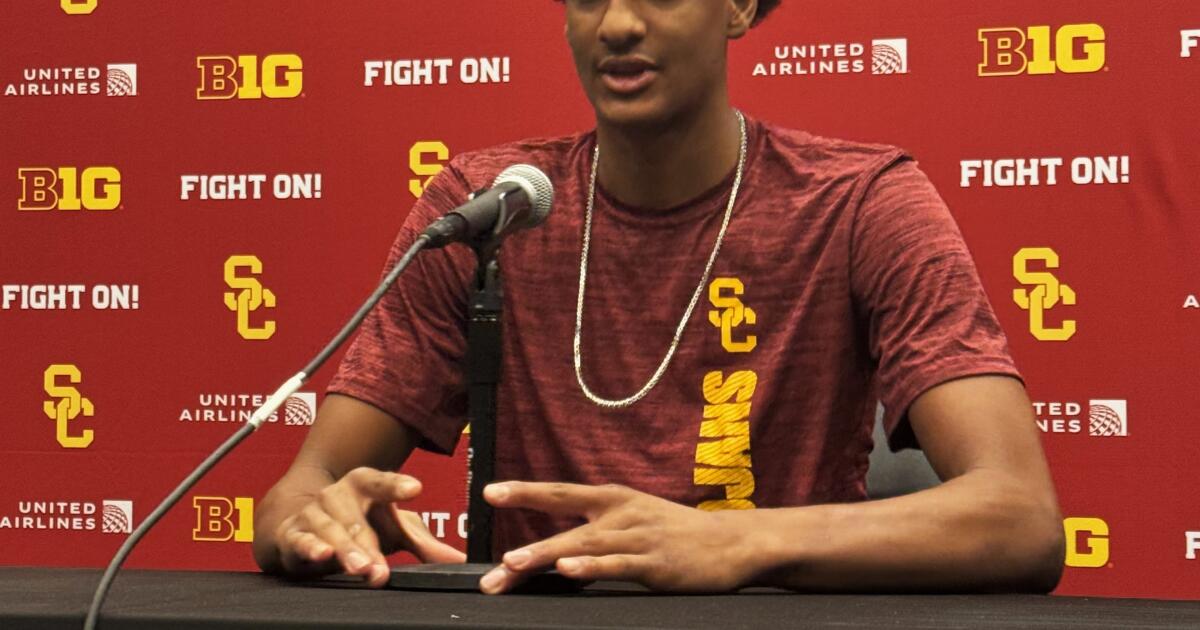Dodger pitcher Roki Sasaki’s walkout music, “Báilalo Rocky,” is the Latin hit of the fall
So far this postseason, whenever Dodgers fans heard “Báilalo Rocky” ring through the loudspeakers, that meant two things were coming — pitcher Roki Sasaki was about to throw some vicious splitters in relief, and a Dodgers win was likely just a few outs away.
Sasaki’s walkout music has taken on a life of its own, in part because of the only-in-L.A. culture clash that has a sensational Japanese pitcher embracing a Latin club hit as he dominates the postseason. It’s helped cement Sasaki’s appeal among the Latino Dodgers faithful, and given the song a huge global boost as the Dodgers prepare for the start of World Series today.
Here’s a primer on how Sasaki found his hype track, and how it’s become the breakout hit of L.A. this fall.

So who wrote “Báilalo Rocky?”
The version of the song Sasaki walks out to is by Dj Roderick and Dj Jose Gonzalez and vocalist Ariadne Arana (there’s another popular version by Arana, the Dominican MC Yoan Retro and GMBeats Degranalo).
The song is a super-infectious and chantable dembow-house track, and its Spanish hook — “¡Báilalo, Rocky! / Ta, ta, ta, ta / Suéltale, suéltale” — is an invitation for a guy to dance and cut loose. But here, it’s directed at the young phenom Sasaki to bedevil hitters when he comes out in relief. The way Arana pronounces the hook makes it sound like she’s singing right at the Dodgers’ Roki.
That’s a left-field choice for a 23-year-old pitcher from Japan in his first year in L.A.. How did Sasaki discover it?
Dodgers veteran second baseman Miguel Rojas turned him onto the song during spring training this year, where it became a dugout favorite. (The whole dugout is known to pound on the railing when the track comes on.) Sasaki started using it in April, before a four-month recovery from a right shoulder impingement.
The theme song “was actually MiggyRo’s idea,” Sasaki said to press in Japanese last week. “I’m really happy the fans are enjoying it.”
There’s a delightful incongruity to the modest, laser-focused young Japanese pitcher walking out to a lascivious Latin club banger. But as Sasaki has rebounded from an injury-plagued midseason to become the Dodgers’ lights-out reliever in the postseason, ”It’s been special,” Rojas told press last week. “I feel like it just fits him really well.”
For her part, Arana loves the song’s new life as a hit Dodger theme. “The Dodgers are my team,” she’s said.
Has Sasaki’s blessing boosted the track?
Definitely. The song was already popular in Latin music circles, and it’s become a go-to cover and source material for Latin artists like corridos tumbados singer Tito Doble P and Lomiiel. Even other athletes, like Spanish soccer superstar Lamine Yamal, have gotten in on the track as a meme. It’s racked up tens of millions in Spotify and YouTube plays, where nearly every comment is now Sasaki-related.
But naturally, the only place to really hear it is under a cotton candy sky in Elysian Park.
Has it helped Sasaki’s pitching?
In September, Sasaki was pitching for triple-A Oklahoma City and seemed unlikely to win a roster spot back in L.A. anytime soon. Two months later, however, after clutch saves and eye-popping velocity against the Reds, Phillies and Brewers en route to the World Series, he’s having “One of the great all-time appearances out of the ‘pen that I can remember,” as Dodgers manager Dave Roberts called it.
Sasaki’s not the only Dodger with an unexpected Latin walkout track — last year’s World Series hero Freddie Freeman takes the plate to Dayvi and Victor Cardenas’ “Baila Conmigo (ft. Kelly Ruiz).”
But if the Dodgers take home the title thanks to clutch Sasaki saves, Rojas hopes for a full “Báilalo Roki” edit. “I think he deserves a video and the lights go down and all that stuff,” Rojas told MLB.com. “I think that’s the next step for him.”




